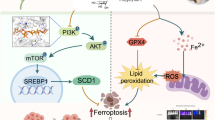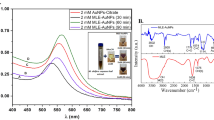Abstract
Tetrandrine (Tet) is a macrocyclic tetrahydroisoquinoline alkaloid isolated from Stephania tetrandra S. Moore along with other Chinese and Japanese herbs. It has been used extensively for the treatment of silicosis, autoimmune disorders, inflammatory diseases and cardiovascular diseases. Of late, Tet has garnered increasing attention for its anticancer activity and its efficacy to reverse chemoresistance. In this study, we evaluated the cytotoxicity of Tet on MGC 803 gastric cancer cells using the methyl thiazolyl tetrazolium (MTT) assay. In addition, apoptosis and cell cycle were analyzed through flow cytometry, mitochondrial membrane potential (MMP) was measured using fluorescence microscopy and migration of cells was determined by transwell assay. It was observed that Tet efficiently inhibited the proliferation of MGC 803 cells in a concentration-dependent and time-dependent manner and reduced the number of colonies at low concentrations. It induced apoptosis through mitochondrial dysfunction, which may be related with upregulated Bcl-2-associated X protein (Bax), and downregulated of B cell lymphoma 2 (Bcl-2). On the other hand, Tet blocked the cell cycle at Gap 2 (G2)/mitosis (M) phase, which was associated with the upregulation of p21CIP1/WAF1. Furthermore, Tet elevated the intracellular reactive oxygen species (ROS) level and suppressed the migration of MGC 803 cells. Altogether, we demonstrated that Tet inhibited the proliferation and migration of gastric cancer MGC 803 cells and thus might be a potential drug candidate for the treatment of gastric cancer.







Similar content being viewed by others
References
Butler MS (2005) Natural products to drugs: natural product derived compounds in clinical trials. Nat Prod Rep 22:162–195
Butler MS, Robertson AAB, Cooper MA (2014) Natural product and natural product derived drugs in clinical trials. Nat Prod Rep 31:1612–1661
Chao DT, Korsmeyer SJ (1998) BCL-2 family: regulators of cell death. Annu Rev Immunol 16:395–419
Chaudhary P, Vishwanatha JK (2014) c-Jun NH2-terminal kinase-induced proteasomal degradation of c-FLIPL/S and Bcl2 sensitize prostate cancer cells to Fas- and mitochondria-mediated apoptosis by tetrandrine. Biochem Pharmacol 91:457–473
Chen X, Tan M, Xie Z, Feng B, Zhao Z, Yang K, Hu C, Liao N, Wang T, Chen D, Xie F, Tang C (2016) Inhibiting ROS-STAT3-dependent autophagy enhanced capsaicin-induced apoptosis in human hepatocellular carcinoma cells. Free Radic Res 50:1–12
Driggers EM, Hale SP, Lee J, Terrett NK (2008) The exploration of macrocycles for drug discovery—an underexploited structural class. Nat Rev Drug Discov 7:608–624
Fu LW, Zhang YM, Liang YJ, Yang XP, Pan QC (2002) The multidrug resistance of tumour cells was reversed by tetrandrine in vitro and in xenografts derived from human breast adenocarcinoma MCF-7/adr cells. Eur J Cancer 38:418–426
Gao J, Ji X, He T, Zhang Q, He K, Zhao Y, Chen S, Lv G (2013) Tetrandrine suppresses cancer angiogenesis and metastasis in 4T1 tumor bearing mice. Evid Based Complement Altern Med 2013:1–12
Guan F, Ding Y, Zhang Y, Zhou Y, Li M, Wang C (2016) Curcumin suppresses proliferation and migration of MDA-MB-231 breast cancer cells through autophagy-dependent Akt degradation. PLoS One 11:e0146553
Hanahan D, Weinberg RA (2011) Hallmarks of cancer: the next generation. Cell 144:646–674
Harvey AL, Edrada-Ebel R, Quinn RJ (2015) The re-emergence of natural products for drug discovery in the genomics era. Nat Rev Drug Discov 14:111–129
He BC, Gao JL, Zhang BQ, Luo Q, Shi Q, Kim SH, Huang E, Gao Y, Yang K, Wagner ER, Wang L, Tang N, Luo J, Liu X, Li M, Bi Y, Shen J, Luther G, Hu N, Zhou Q, Luu HH, Haydon RC, Zhao Y, He TC (2011) Tetrandrine inhibits Wnt/beta-catenin signaling and suppresses tumor growth of human colorectal cancer. Mol Pharmacol 79:211–219
Hernandez-Vargas H, Palacios J, Moreno-Bueno G (2007) Telling cells how to die: docetaxel therapy in cancer cell lines. Cell Cycle 6:780–783
Irani K, Xia Y, Zweier JL, Sollott SJ, Der CJ, Fearon ER, Sundaresan M, Finkel T, Goldschmidt-Clermont PJ (1997) Mitogenic signaling mediated by oxidants in Ras-transformed fibroblasts. Science 275:1649–1652
Kroemer G, Galluzzi L, Brenner C (2007) Mitochondrial membrane permeabilization in cell death. Physiol Rev 87:99–163
Kuo PL, Lin CC (2003) Tetrandrine-induced cell cycle arrest and apoptosis in Hep G2 cells. Life Sci 73:243–252
Lachance H, Wetzel S, Kumar K, Waldmann H (2012) Charting, navigating, and populating natural product chemical space for drug discovery. J Med Chem 55:5989–6001
Lee JH, Kang GH, Kim KC, Kim KM, Park DI, Choi BT, Kang HS, Lee YT, Choi YH (2002) Tetrandrine-induced cell cycle arrest and apoptosis in A549 human lung carcinoma cells. Int J Oncol 21:1239–1244
Liu B, Wang T, Qian X, Liu G, Yu L, Ding Y (2008) Anticancer effect of tetrandrine on primary cancer cells isolated from ascites and pleural fluids. Cancer Lett 268:166–175
Liu T, Liu X, Li W (2016) Tetrandrine, a Chinese plant-derived alkaloid, is a potential candidate for cancer chemotherapy. Oncotarget 26:40800–40815
Liu W, Kou B, Ma ZK, Tang XS, Lv C, Ye M, Chen JQ, Li L, Wang XY, He DL (2015) Tetrandrine suppresses proliferation, induces apoptosis, and inhibits migration and invasion in human prostate cancer cells. Asian J Androl 17:850–853
Ma L, Zheng Y, Wang S, Wang B, Wang Z, Pang L, Zhang M, Wang J, Ding L, Li J, Wang C, Hu B, Liu Y, Zhang X, Wang J, Wang Z, Zhao W, Liu H (2015) Design, synthesis, and structure–activity relationship of novel LSD1 inhibitors based on pyrimidine–thiourea hybrids as potent, orally active antitumor agents. J Med Chem 58:1705–1716
Marsault E, Peterson ML (2011) Macrocycles are great cycles: applications, opportunities, and challenges of synthetic macrocycles in drug discovery. J Med Chem 54:1961–2004
Mei L, Chen Y, Wang Z, Wang J, Wan J, Yu C, Liu X, Li W (2015) Synergistic anti-tumour effects of tetrandrine and chloroquine combination therapy in human cancer: a potential antagonistic role for p21. Br J Pharmacol 172:2232–2245
Nunez G, Clarke MF (1994) The Bcl-2 family of proteins: regulators of cell death and survival. Trends Cell Biol 4:399–403
Qin R, Shen H, Cao Y, Fang Y, Li H, Chen Q, Xu W (2013) Tetrandrine induces mitochondria-mediated apoptosis in human gastric cancer BGC-823 cells. PLoS One 8:e76486
Qiu W, Su M, Xie F, Ai J, Ren Y, Zhang J, Guan R, He W, Gong Y, Guo Y (2014) Tetrandrine blocks autophagic flux and induces apoptosis via energetic impairment in cancer cells. Cell Death Dis 5:e1123
Ramsey MR, Sharpless NE (2006) ROS as a tumour suppressor? Nat Cell Biol 8:1213–1215
Rybak M, Lomaestro B, Rotschafer JC, Moellering R, Craig W, Billeter M, Dalovisio JR, Levine DP (2008) Therapeutic monitoring of vancomycin in adult patients: a consensus review of the American Society of Health-System Pharmacists, the Infectious Diseases Society of America, and the Society of Infectious Diseases Pharmacists. Am J Health Syst Pharm 66:82–98
Sakamoto J, Matsui T, Kodera Y (2009) Paclitaxel chemotherapy for the treatment of gastric cancer. Gastric Cancer 12:69–78
Shukla S, Kanwal R, Shankar E, Datt M, Chance MR, Fu P, MacLennan GT, Gupta S (2015) Apigenin blocks IKKalpha activation and suppresses prostate cancer progression. Oncotarget 6:31216–1232
Sola S, Morgado AL, Rodrigues CM (2013) Death receptors and mitochondria: two prime triggers of neural apoptosis and differentiation. Biochim Biophys Acta 1830:2160–2166
Sun X, Xu R, Deng Y, Cheng H, Ma J, Ji J, Zhou Y (2007) Effects of tetrandrine on apoptosis and radiosensitivity of nasopharyngeal carcinoma cell line CNE. Acta Biochim Biophys Sin 39:869–878
Sun YF, Wink M (2014) Tetrandrine and fangchinoline, bisbenzylisoquinoline alkaloids from Stephania tetrandra can reverse multidrug resistance by inhibiting P-glycoprotein activity in multidrug resistant human cancer cells. Phytomedicine 21:1110–1119
Takahashi A, Ohtani N, Yamakoshi K, Iida S, Tahara H, Nakayama K, Nakayama KI, Ide T, Saya H, Hara E (2006) Mitogenic signalling and the p16INK4a-Rb pathway cooperate to enforce irreversible cellular senescence. Nat Cell Biol 8:1291–1297
Wan J, Liu T, Mei L, Li J, Gong K, Yu C, Li W (2013) Synergistic antitumour activity of sorafenib in combination with tetrandrine is mediated by reactive oxygen species (ROS)/Akt signaling. Br J Cancer 109:342–350
Wang SQ, Wang C, Chang LM, Zhou KR, Wang JW, Ke Y, Yang DX, Shi HG, Wang R, Shi XL, Ma LY, Liu HM (2016) Geridonin and paclitaxel act synergistically to inhibit the proliferation of gastric cancer cells through ROS-mediated regulation of the PTEN/PI3K/Akt pathway. Oncotarget 7:72990–73002
Wang SQ, Wang C, Wang JW, Yang DX, Wang R, Wang CJ, Li HJ, Shi HG, Ke Y, Liu HM (2017) Geridonin, a novel derivative of oridonin, inhibits proliferation of MGC 803 cells both in vitro and in vivo through elevating the intracellular ROS. J Pharm Pharmacol 69:213–221
Wessjohann LA, Ruijter E, Garcia-Rivera D, Brandt W (2005) What can a chemist learn from nature’s macrocycles? — A brief, conceptual view. Mol Divers 9:171–186
Wu GQ, Chai KQ, Zhu XM, Jiang H, Wang X, Xue Q, Zheng AH, Zhou HY, Chen Y, Chen XC, Xiao JY, Ying XH, Wang FW, Rui T, Liao YJ, Xie D, Lu LQ, Huang DS (2016) Anti-cancer effects of curcumin on lung cancer through the inhibition of EZH2 and NOTCH1. Oncotarget 18:26535–26550
Wu Z, Wang G, Xu S, Li Y, Tian Y, Niu H, Yuan F, Zhou F, Hao Z, Zheng Y, Li Q, Wang J (2014) Effects of tetrandrine on glioma cell malignant phenotype via inhibition of ADAM17. Tumour Biol 35:2205–2210
Xing Z, Zhang Y, Zhang X, Yang Y, Ma Y, Pang D (2013) Fangchinoline induces G1 arrest in breast cancer cells through cell-cycle regulation. Phytother Res 27:1790–1794
Xu H, Hou Z, Zhang H, Kong H, Li X, Wang H, Xie W (2014) An efficient Trojan delivery of tetrandrine by poly(N-vinylpyrrolidone)-block-poly(epsilon-caprolactone) (PVP-b-PCL) nanoparticles shows enhanced apoptotic induction of lung cancer cells and inhibition of its migration and invasion. Int J Nanomed 9:231–242
Yu B, Zheng YC, Shi XJ, Qi PP, Liu HM (2016) Natural product-derived spirooxindole fragments serve as privileged substructures for discovery of new anticancer agents. Anticancer Agents Med Chem 16:1315–1324
Acknowledgements
This study was supported by National Natural Science Foundation of China (NO. 81472714 for Xiao-Bing Chen).; the Key Medical Technologies Research & Development Program of Henan Provence (No. 201502027 for Xiao-Bing Chen).
Author information
Authors and Affiliations
Corresponding author
Ethics declarations
Conflict of interest
The authors declare that they have no conflict of interest.
Ethical approval
This article does not contain any studies with human participants or animals performed by any of the authors.
Supplementary Information
Rights and permissions
About this article
Cite this article
Wang, SQ., Hou, HL., Bie, LY. et al. Mechanistic studies of the apoptosis induced by the macrocyclic natural product tetrandrine in MGC 803 cells. Med Chem Res 28, 107–115 (2019). https://doi.org/10.1007/s00044-018-2268-8
Received:
Accepted:
Published:
Issue Date:
DOI: https://doi.org/10.1007/s00044-018-2268-8




